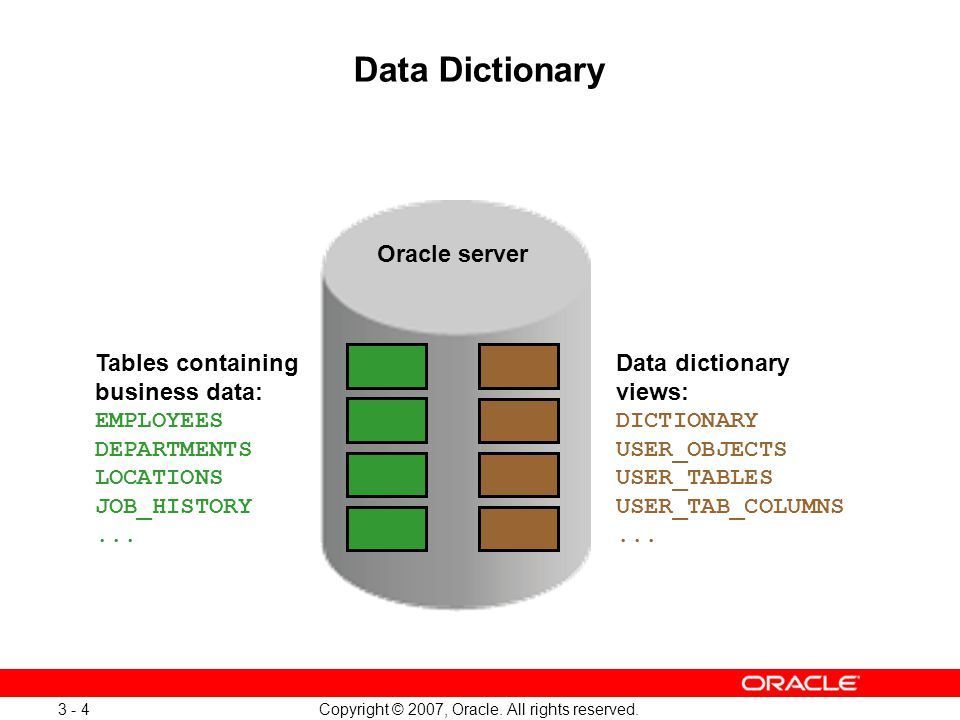Hi ,
In this article I will tell you how to use data dictionary views , what is a data dictionary .
DATA DICTIONARY
-
Database information is information about all objects , user privileges , and locations where the information is stored . They can be obtained from tables or views .
HOW TO USE DATA DICTIONARY VIEWS ?
-
All view names we want to search are under DICTIONARY .
-
It has only 2 columns named Table_name and comments .
SELECT * FROM DICTIONARY;
DATA DICTIONARY VIEWS
USER_OBJECTS
It gives us information about all objects owned by the user .
-
Date the object was created ,
-
Date of last modification ,
-
Object type ,
-
The validity of the object .
SELECT * FROM USER_OBJECTS;
ALL_OBJECTS
Gives information about the objects that the user owns and can also access .
SELECT * FROM ALL_OBJECTS;
-
Tables created by users can be queried ,
SELECT * FROM USER_TABLES;
-
Columns of tables can be queried ,
SELECT * FROM USER_TAB_COLUMNS;
-
Constraints created by users can be queried ,
SELECT * FROM USER_CONTRAINTS;
-
Provides brief information about Constraintler .
SELECT * FROM USER_SEQUENCES;
SELECT * FROM USER_VIEWS;
See you in my next post.

